1. Causes
1.1. Post-Streptococcal Glomerulonephritis
1.1.1. pathophysiology
1.1.1.1. inflammation alters
1.1.1.1.1. glomerular structure
1.1.1.1.2. kidney function
1.1.1.2. follows infections, either skin or respiratory
1.1.1.2.1. group A Beta-hemolytic streptococcus
1.1.1.2.2. antibody-antigen reaction
1.1.2. complications
1.1.2.1. uremia
1.1.2.2. renal failure
1.1.3. signs/symptoms
1.1.3.1. fever
1.1.3.2. lethargy
1.1.3.3. headache
1.1.3.4. decreased urine output
1.1.3.5. abdominal pain
1.1.3.6. vomiting
1.1.3.7. anorexia
1.1.3.8. elevated BP
1.1.3.9. proteinuria
1.1.4. nursing management
1.1.4.1. antihypertensives
1.1.4.2. diuretics
1.1.4.3. monitor BP
1.1.4.4. Sodium/fluid restrictions
1.1.4.5. Weight on same scale with same weight at same time
1.2. Hemolytic Uremia Syndrome
1.2.1. defined by
1.2.1.1. hemolytic anemia
1.2.1.2. thrombocytopenia
1.2.1.3. acute renal failure
1.2.2. Typical
1.2.2.1. diarrheal illness leads to this
1.2.2.1.1. progressed to hemorrhagic colitis
1.2.2.2. typically caused by a specific strain of E. coli that releases verotoxin
1.2.2.3. labs
1.2.2.3.1. Increased BUN/creatinine
1.2.2.3.2. Anemia
1.2.2.3.3. Increased reticulocyte
1.2.2.3.4. Increased bilirubin
1.2.2.3.5. Hyponatremia
1.2.2.3.6. Hyperkalemia
1.2.2.3.7. Hyperphosphatemia
1.2.2.3.8. Metabolic acidosis
1.2.3. nurse management
1.2.3.1. Strict I&Os
1.2.3.2. monitor infusions vs labs
1.2.3.3. diuretic administration
1.2.3.4. blood pressure monitor
1.2.3.5. monitor for bleeding
1.2.3.6. dialysis
1.2.3.7. promote handwashing
1.3. Nephrotic Syndrome
1.3.1. Pathophysiology
1.3.1.1. Increased glomerular permeability
1.3.1.1.1. Plasma proteins can move through
1.3.1.2. Proteinuria
1.3.1.3. Hypoalbuminemia
1.3.1.3.1. change in osmotic pressure
1.3.1.4. Increased risk for
1.3.1.4.1. clotting
1.3.1.4.2. infection
1.3.2. Management
1.3.2.1. Corticosteroids
1.3.2.2. IV albumin with severe edema
1.3.2.3. Immunosuppressive therapy if
1.3.2.3.1. unresponsive to steroids
1.3.2.3.2. experiencing flare ups
1.3.2.4. Diuretics to get rid of excess fluid
1.3.3. signs and symptoms
1.3.3.1. nausea/vomiting
1.3.3.2. weight gain
1.3.3.3. Weakness, fatigue
1.3.3.4. Irritability/fussiness
1.3.4. Risk factors
1.3.4.1. Slowed intrauterine growth
1.3.4.2. Young age
1.3.4.3. Male sex
2. Pathophysiology
2.1. sudden, reversible, renal function
2.1.1. accumulation of metabolic toxins
2.1.2. fluid and electrolyte imbalance
2.1.2.1. fluid overload
2.1.2.1.1. HTN
2.1.2.1.2. pulmonary edema
2.1.2.1.3. congestive heart failure
2.1.3. decreased renal perfusion
2.1.3.1. hypovolemic
2.1.3.2. septic shock
3. Symptoms
3.1. nausea
3.2. vomiting
3.3. diarrhea
3.4. lethargy
3.5. fever
3.6. decreased urine output
4. Complications
4.1. anemia
4.2. hyperkalimia
4.3. hypertension
4.4. pulmonary edema
4.5. cardiac failure
4.6. altered level of consciousness
4.7. seizures
5. Treatment
5.1. Pre-RRT
5.1.1. fluid administration for hypovolemia
5.1.2. Inotropic support following adequate volume repletion
5.1.3. Adjust/substitute nephrotoxic medications based on renal function and drug levels
5.2. RRT
5.2.1. Indications
5.2.1.1. acute/urgent
5.2.1.1.1. high levels of
5.2.1.1.2. increasing levels of
5.2.1.1.3. advanced uremia
5.2.1.1.4. remove medications/toxins
5.2.1.1.5. edema that doesn't respond to other treatment
5.2.1.1.6. hyperkalemia, hypercalcemia, hypertension
5.2.1.2. chronic/maintenance
5.2.1.2.1. advanced CKD
5.2.2. Complications
5.2.2.1. hypertriglyceridemia is accentuated
5.2.2.2. heart failure
5.2.2.3. angina
5.2.2.4. stroke
5.2.2.5. peripheral vascular disease
5.2.2.6. compounded anemia
5.2.2.7. coronary artery disease
5.2.2.8. vomiting with rapid fluid shift
5.3. K
5.3.1. normal values
5.3.1.1. 3.5-5.0 mEq/L
5.3.2. treatment to hyperkalemia
5.3.2.1. albuterol in moderate cases
5.3.2.1.1. reduce potassium levels
5.3.2.2. calcium chloride in severe cases
5.3.2.3. exchange resin in mild cases
5.3.2.4. insulin and glucose in moderate cases
5.3.2.5. sodium bicarbonate (though limited effects)
5.3.2.6. diuretics in mild cases
6. Nursing Care
6.1. manage hypertension
6.1.1. monitor BP
6.1.2. antihypertensives
6.2. restore fluid/electrolyte balance
6.2.1. assess vitals
6.2.2. assess urine specific gravity
6.2.3. strict I&Os
6.2.4. monitor for hyperkalemia
6.2.4.1. weak/irregular pulse
6.2.4.2. muscle weakness
6.2.4.3. stomach/abdominal cramps
6.2.5. monitor for hypocalcemia
6.2.5.1. muscle twitching
6.2.5.2. tetany
6.2.6. polystyrene sulfonate to reduce potassium levels
6.2.7. RBC as needed
6.2.8. dialysis if significant fluid overload, severe electrolyte imbalance, depressed CNS
6.3. provide family education
6.3.1. s/s to report
6.3.2. home therapies
6.3.3. dialysis education
6.3.4. prevention

